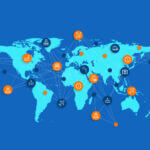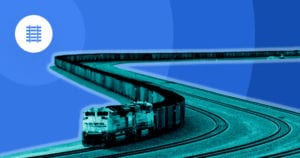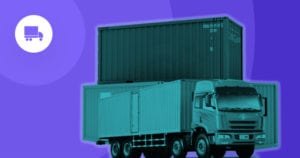
The COVID-19 pandemic has had a significant impact upon the supply chains that keep store shelves stocked and enterprises running. Rather than putting their digital transformation plans on hold, enterprises are doubling down on the Internet of things (IoT) as they seek greater resilience and try to meet the needs of changing markets.
IoT Business Index 2020
One of the biggest economic impacts of the current pandemic may be a shift toward more local production and distribution. Compared to just a few years ago, when enterprises were entrenched in globalism, many businesses today may already be primed to benefit from shorter and more robust supply chains.
In 2017, Arm sponsored the Internet of Things (IoT) Business Index, a survey and report launched by the Economist Intelligence Unit (EIU) that determined how the commercial adoption of then-nascent IoT technologies was making only marginal advancements. This year, however, a follow-up report called the IoT Business Index 2020 highlights an exciting step-change in IoT deployment.
Only 18 percent of executives believed that supply chain management and logistics benefited from IoT-based insights more than any other business IoT initiatives in 2017— this number leaped to 28 percent in 2020. Additionally, 38 percent of respondents in both 2017 and 2020 believed that data management and analysis profited the most from the IoT — both, of course, are key tools in keeping supply chains moving and businesses operational in times of crisis.
Commercial Adoption of IoT
Prior to the current pandemic, the global business community was already grappling with questions about how to adopt new IoT technologies and platforms, but recent events highlight the need for simpler, more transparent, resilient supply chains that can respond quickly in a crisis.
In our blog series about the commercial adoption of IoT technologies in the COVID-19 era, we’ll discuss sectors that are already adopting IoT and others that can easily pivot around supply chain innovation. We’ll also examine some of the biggest challenges to the commercial adoption of IoT technologies since the COVID-19 pandemic began, exploring regional differences in production costs offset by investment in greater automation and IoT.
1. Shorter, More Robust Supply Chains
Over the last few decades, supply chains became increasingly global. In the 1980s and 1990s, the development or redrafting of the European Union, North American Free Trade Agreement (NAFTA), Association of Southeast Asian Nations (ASEAN), the World Trade Organization, and other regionalist entities reorganized the economic world order by creating new value chains.
Yet even before the current pandemic, deglobalization was underway forcing enterprises to hasten their transition to more local production and distribution markets, even as businesses strategize ways to bring their products to the global market using IoT technology to offset localized costs through additional visibility and efficiencies in these new supply chains.
2. Meet Changing Market Needs with Technology
As more companies develop digital transformation strategies and deploy IoT, we’ll see Applications evolve for AI, 5G, and Edge computing.
AI is currently being deployed to help search for vaccines and therapeutics and it has eased the administrative burdens of burgeoning telehealth services. 5G is also supporting these endeavors by enabling faster connections for virtual meetings and telehealth visits. What we’re seeing is just the tip of the iceberg of what new, IoT-enabled technologies can do — for society and for the changing environment.
How will enterprises continue to use AI and IoT to make society run more smoothly? What ways will these conjoined technologies connect tomorrow’s cities? Can technologies such as 5G and Edge computing make the new economy work for more than just local production? In the weeks ahead, we’ll look closely at some of the ways IoT and converging technologies may fuel future business growth.
3. Security and Trust Dependent Economy
The IoT Business Index 2020 provides evidence demonstrating that 82 percent of organizations grew their IoT investments in the last three years, up from 62 percent who said the same in 2017. One in five businesses (20 percent) grew that investment by 50 percent or more, and a recent study in May from Juniper Research predicts that IoT platform revenues are expected to reach $66 billion in 2020, an increase of 20 percent from last year.
Unfortunately, the growth of IoT increases the risk of cyberattacks. Prior to COVID-19, the IoT Business Index 2020 showed that 45 percent of business managers who worked with IoT believed that security concerns hampered IoT adoption; 37 percent even discouraged their companies from pursuing an IoT strategy.
Yet since the emergence of COVID-19, IoT adoption is swiftly and necessarily on the rise. Therefore, device estates need to be secure by design. In our blog series, we’ll examine how the increasingly technology-driven enterprise must architect themselves around multi-layered security protecting their IoT device estates, and that those devices can be managed remotely, at scale, and without adding friction to the system. We’ll answer questions such as: What internal expertise and regulations are needed? What considerations must be made as the world ramps up its IoT deployments? How do companies ensure that they don’t let hackers slip through the gaps of layered security?
Now more than ever before, there is a new, urgent need for more precise and reliable data. We believe that enterprises will drive new IoT-driven initiatives that can meet the needs of changing markets and we look forward to exploring adoption strategies in the weeks to come.
________________________________________________________
Download your copy of the Economist Intelligence Unit’s IoT Business Index 2020.





 Related Podcast Episode
Related Podcast Episode




 Related Applications
Related Applications



 Latest IoT News
Latest IoT News









